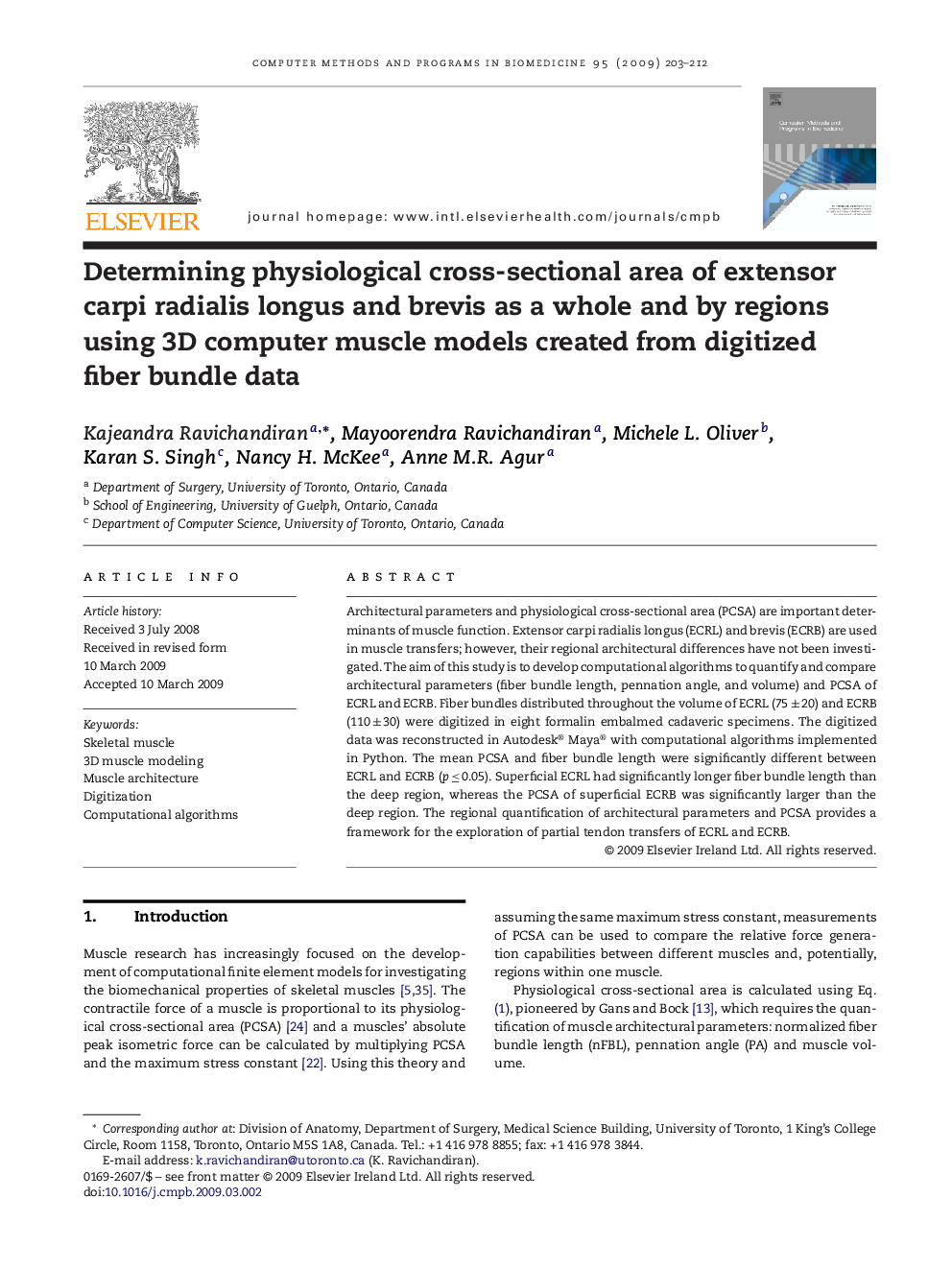| Article ID | Journal | Published Year | Pages | File Type |
|---|---|---|---|---|
| 469406 | Computer Methods and Programs in Biomedicine | 2009 | 10 Pages |
Architectural parameters and physiological cross-sectional area (PCSA) are important determinants of muscle function. Extensor carpi radialis longus (ECRL) and brevis (ECRB) are used in muscle transfers; however, their regional architectural differences have not been investigated. The aim of this study is to develop computational algorithms to quantify and compare architectural parameters (fiber bundle length, pennation angle, and volume) and PCSA of ECRL and ECRB. Fiber bundles distributed throughout the volume of ECRL (75 ± 20) and ECRB (110 ± 30) were digitized in eight formalin embalmed cadaveric specimens. The digitized data was reconstructed in Autodesk® Maya® with computational algorithms implemented in Python. The mean PCSA and fiber bundle length were significantly different between ECRL and ECRB (p ≤ 0.05). Superficial ECRL had significantly longer fiber bundle length than the deep region, whereas the PCSA of superficial ECRB was significantly larger than the deep region. The regional quantification of architectural parameters and PCSA provides a framework for the exploration of partial tendon transfers of ECRL and ECRB.
